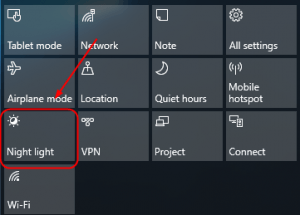

However, you first need to identify such software and then remove them. In such cases, you can uninstall the problematic application and software from your computer. Some program files can conflict with Windows system files, giving unwanted trouble to the users. The Windows 10 brightness slider missing issue will be resolved if the buggy update was an issue.
#Amd brightness control install#
If there are any new OS updates available, download and install them. You can check for any new Windows updates in the Settings app, under the Update & Security section. Windows 10 fixes previous bugs and issues with its latest updates, and therefore it is recommended to keep your OS updated. If the screen brightness slider is missing after a recent Windows 10 update, you can check for any new update to fix this bug. You can use this way of controlling the brightness till you don’t see the slider again on the notification area. Keys for increasing and decreasing the brightness You have to press those brightness hotkeys with the Fn key simultaneously to adjust brightness. Many keyboards and laptop manufacturers provide you with shortcut keys to increase and decrease the screen’s brightness. Select the Enable device option if you disabled it as per the above instructions.Ĭlose the Device Manager window and check if you can make changes in brightness settings. Wait for a minute and then right-click on the monitor driver again. However, if the driver is not disabled, you can disable it and then re-enable it. If you see the Enable device option, click on it to enable the driver. In the Device Manager, expand Monitor and then right-click on Monitor driver. Press the Windows logo key + X and then open Device Manager by clicking on it from the menu.
#Amd brightness control drivers#
You can enable monitor drivers through the device manager in Windows 10. Many times the monitor driver can get disabled on its own, which can cause no brightness issue. If there is still no slider for brightness in Windows 10, you need to tweak the device manager to get it fixed. This will add a brightness slider to the Windows 10 action center. Adding brightness slider to quick action option

And once you add a slider to the quick action option, click on Done.

You will see the notification area on the screen, click on Add ➜ Brightness. Now, from the left panel, go to Notifications & actions and then click on Edit your quick actions. Press the Windows logo key + I to launch the Settings app and go to the System section. As without adding it via the Settings app, you won’t see the monitor brightness slider. The first thing to check here is if the display slider for brightness control is enabled or not. Make Sure Brightness Slider is Added to Quick Action Center The solutions given below can help you fix the missing brightness slider in Windows 10 quickly. The missing slider issue is not as severe as other Windows errors like BSOD or stop code errors.
#Amd brightness control how to#
Use Third-Party Applications How To Fix Windows 10 Brightness Slider Missing Issue


 0 kommentar(er)
0 kommentar(er)
